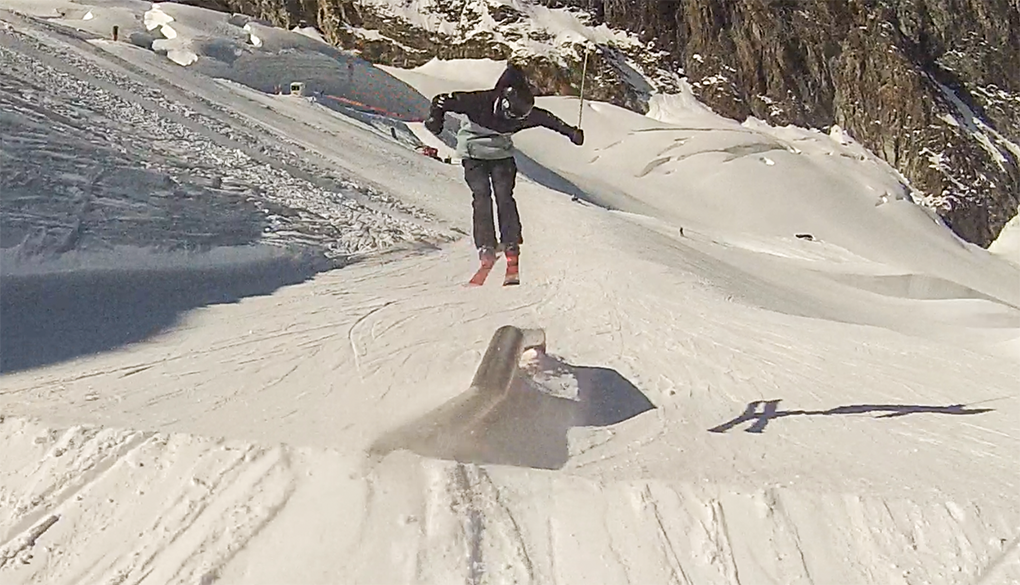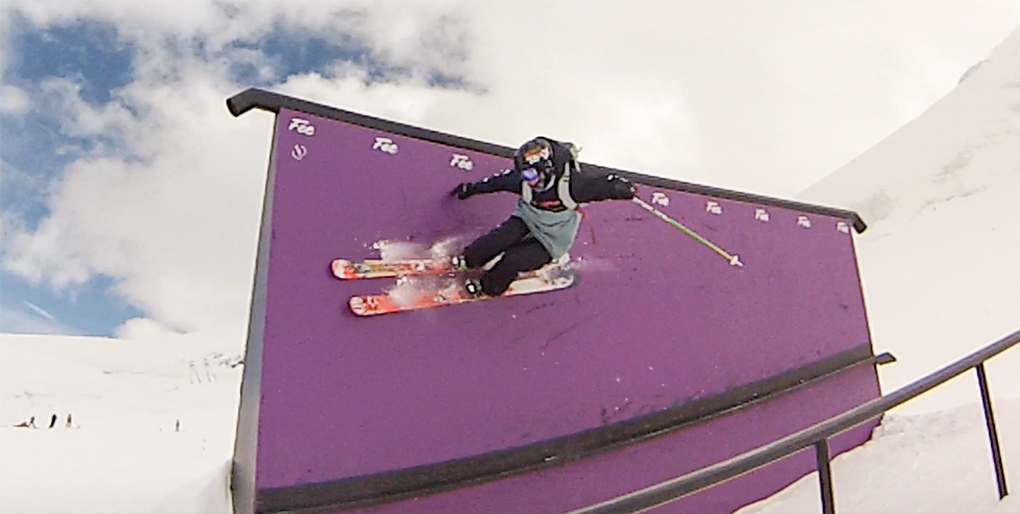Rails and Jibs
The NFX’s swing weight was a bit of an issue for me on rails and jib features. Initiating spins on to rails felt more cumbersome than on the Head Caddy, switch ups required additional effort, and spins out of rails just felt a bit slower and more laborious. That’s not to say that the additional swing weight is an absolute hindrance to performing any sort of standard rail trick; in my experience, the NFX just took a few days to adjust and recalibrate how I executed certain tricks before they began to feel natural again.

While the NFX’s additional swing weight didn’t provide a nimble feel, its stiff flex pattern doesn’t lend it a playful feel, either. Loading up the tips to perform nose butters requires a lot of effort and physical commitment, and even then, the NFX’s tips never really want to give. The same goes for nose and tail presses on jib features; the core is simply too stiff (for me) to get the skis to bend properly in order to stay balanced on a rail during presses.
Durability
Six days on a ski isn’t necessarily long enough to get a full indication of how durable a ski is. Unless the ski completely blows up immediately or you snap the ski, it’s generally pretty difficult to predict if the ski will hold up to another month or two of abuse.
For me, the first thing that goes on just about every park ski I ride is the edges. Testing the NFX, I found a single edge crack after the first day, and about 10 edge cracks total by the end of the testing period. I tend to do a lot of disasters and pretty high-impact rail tricks that take a large toll on every park ski I use. While this kind of edge damage after a relatively short period is a little disappointing, and doesn’t stand up to Armada’s durability as far as edges go, it certainly isn’t abnormal for me.

As far as other aspects of durability go, the NFX shows no sign of significant or abnormal wear. I found no signs of impending delamination or core failure, though there was some minor topsheet chipping.
Bottom Line
The Salomon NFX is an uncompromisingly stable, competition-oriented park ski. Versatility is not the story here. The NFX is fairly heavy and sluggish (particularly on rails), and is one of the least playful park skis I’ve ever used—though bigger skiers may feel different about the NFX. I personally would not use the NFX as a one-ski park quiver, but I would absolutely consider it as an excellent competition slopestyle ski.

Hi
Great review, have you also skied the Rossi Slat ? How do the Caddy and NFX compare to the Slat ?
thks
Ian,
I’ve only skied the Slat for literally one park run, but I’ll try to make comparisons.
As far as flex patterns go, the Slat falls somewhere between the Caddy and NFX; fairly stiff, but a noticeable touch softer than the NFX. It also features a bit of tip and tail rocker, which more aligns itself with the Caddy, but the rocker being a bit more noticeable than the Caddy. It’s also generally heavier than the Caddy and slightly less playful, despite its wider waist and more aggressive rocker profile. Additionally, the Slat is considerably wider underfoot than either ski at 97mm wide. The Slat isn’t quite as stable as the NFX, certainly, and it lends itself a somewhat clunkier feel than the Head Caddy.
Sorry I can’t make more conclusive statements than that, as I really haven’t put much time on the Slat.
Scott
Hi Scott! Great review! Just got a set of NFXs myself. I wonder if you have any input of mounting position?
Usually mount true center on park skis, even though I tend to use them in pist quite a lot as well.
How did you feel about going back 1 cm?
Hi Scott, thanks for the review of the NFX. Can you also campare the NFX with the Nordica ace of spades?
Thanks
Hey Scott,
Do you think the NFX ski’s the slopes well?
thankyou